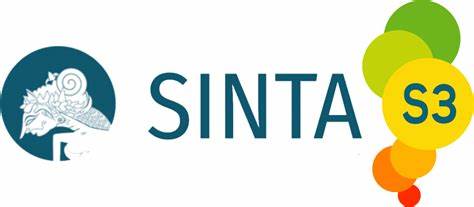IMPROVING STUDENTS’ SPEAKING SKILL THROUGH ENGLISH MOVIE IN SCOPE OF SPEAKING FOR GENERAL COMMUNICATION
DOI:
https://doi.org/10.22460/eltin.v7i2.p43-53Abstract
Speaking for general communication is compulsory subject that must be taken by students during second semester. In reality, most of the students at IKIP Siliwangi face some problems related to speaking skill. To improve the students’ speaking skill, the lecturers need to know what media is the most suitable for the students. This research used Collaborative Classroom Action Research (CAR). The objectives of the study are: 1) finding out whether or not English Movie can improve the students’ speaking skill 2) finding out classroom situation when English Movie implemented in speaking class. To collect data, the researcher used instruments of observations, tests and questionnaires. The finding showed that the use of English Movie was effective in improving the speaking abilities of the student in class. This can be seen from the improvements after each cycle. The average score of pre test was 70.5. After the implementation of English Movie in every cycle, the students’ speaking score were getting better. It can be seen from the result of students’ average score 76.5 in cycle 1 and 81 in cycle 2. Therefore, it can be concluded that English Movie can improve students’ speaking skill and improve speaking classroom into a better situation.
Keywords: Improving, Speaking, English Movie
References
Arikunto, S. (2009). Penelitian Tindakan Kelas. Jakarta: Bumi Aksara.
Darmadi, H. (2015). Assessing Procedure Text Through Simulation To The Tenth Grade Students Of SMK Al-Madani Pontianak. An Article For Tefl Assessment.
Derakhshan, A., Khalili, A. N., & Beheshti, F. (2016). Developing EFL learner’s speaking ability, accuracy and fluency. English Language and Literature Studies, 6(2), 177–186.
Dewi, K. (2016). The Correlation Of SMA Students’ Habit In Watching Movie And Their Speaking Skill. MENDIDIK: Jurnal Kajian Pendidikan Dan Pengajaran, 2(2), 112–118.
Harmer, J. (2003). The Practice of English Language Teaching. Completely revised and updated. Edinburgh Gate: Pearson Education Limited.
Harmer, J. (2007). How to teach English (new ed.). England: Pearson Education Limited.
Harris, J., Mishra, P., & Koehler, M. (2009). Teachers’ technological pedagogical content knowledge and learning activity types: Curriculum-based technology integration reframed. Journal of Research on Technology in Education, 41(4), 393–416.
Koşar, G., & Bedir, H. (2014). Strategies-based instruction: A means of improving adult EFL learners’ speaking skills. International Journal of Language Academy, 2(3), 12–26.
Latif, M. H., & Afzal, H. (2016). Prediction of movies popularity using machine learning techniques. International Journal of Computer Science and Network Security (IJCSNS), 16(8), 127.
Masykur, S. (2016). Manipulations Depicted In Orphan Movie (Doctoral Dissertation, State Islamic University).
Mertler, C. A. (2019). Action research: Improving schools and empowering educators. SAGE Publications, Incorporated.
Mundriyah, M., & Parmawati, A. (2016). Using Think-Pair-Share (Tps) To Improve Students’writing Creativity (A Classroom Action Research In The Second Semester Students Of Stkip Siliwangi Bandung). P2m Stkip Siliwangi, 3(2), 84–91.
Rifa’at, A. A. (2018). Stimulating You To Speak; A Strip Story As A Technique In Teaching Speaking. English And Literature Journal, 5(1), 12–21.
Sidik, A. S. (2013). Improving Students’ Speaking Ability Through Practice Rehearsal Pair of The Tenth Grade of Man Malang 1. Language-Edu, 2(4), 682–688.





